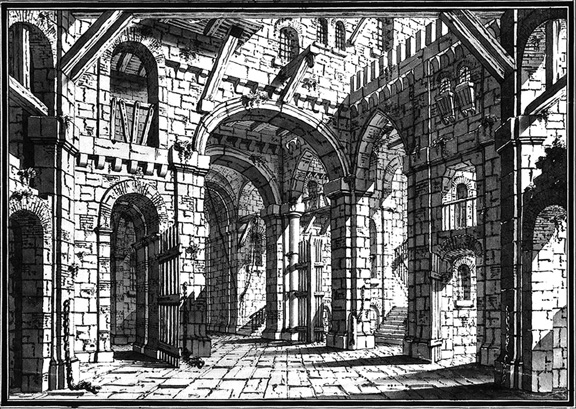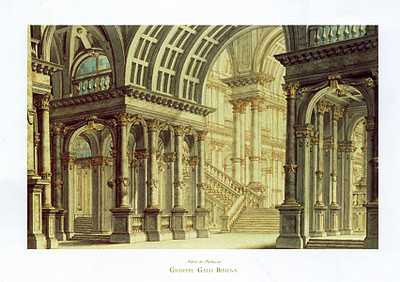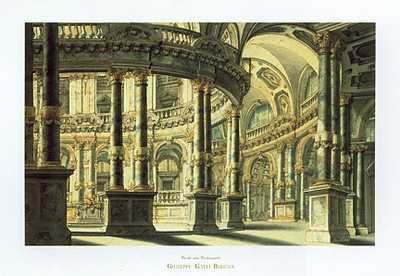Two Point Projection
One Point Perspective assumes that the viewer is looking at the object square on, and that all Orthogonal lines will recede to a Vanishing Point directly in front of the viewer. However, if an object is rotated, or the viewer is situated at an angle to the object, none of its sides will be alligned with the Picture Plane, so they cannot be rendered as Horizontal. And the Orthogonals will not recede to the centre. This is consistent with what the Roman and Medieval artists intuitively perceived, but now we can rationalize the sloping lines. All 'parallel' lines on one surface will converge on one Vanishing Point, while all 'parallel' lines on another surface converge on a different Vanishing Point. In this construct, all Vertical Lines are still rendered as Vertical.
In the mid-seventeenth century, Giovanni Galli Bibiena established a dynasty that would include at least eight Scenic Designers spanning four generations. The work of the Galli Bibiena family comprises some of the finest (also largest) Two Point Perspective ever created. In this first example by Giuseppe (Giovanni's grandson), there are two things worth mentioning. Note that the Vanishing Point for one of the walls will be located off the page to the right. And if you look at the floor tiles, you will see that the Central Vanishing Point is still operational. Other examples of Bibiena's work include staircases, circular shapes and multiple column bases, each having its own vanishing point. So while this is called Two Point Projection, there can be as many Vanishing Points as needed, and none of them will diminish the power of the Central Vanishing Point.
Guiseppe Galli Bibiena
http://www.italnet.nd.edu/ambrosiana/images/D/831.jpg
Guiseppe Galli Bibiena
http://www.artexpression.com/images/TOP/jpgs/GGB297.jpg
Guiseppe Galli Bibiena
http://www.artexpression.com/images/TOP/jpgs/GGB296.jpg


